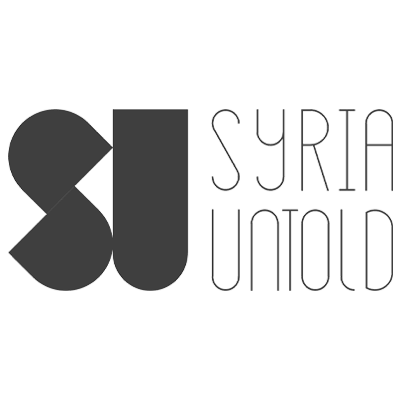Manuel Capella presents a personal account of what it feels to live in contemporary Ecuador for many people. A context where violence is part of everyday life: a “death world” where governments leave people to die (during a pandemic, in prison riots, or in deadly incidents linked to drug trafficking). Making sense of “mental” distress in such context does not require individualistic approaches, but the analysis of necropolitics and the construction of collective mental health through particular strategies.
A bomb just exploded at a local mall in the Ecuadorian city of Guayaquil, where I live and work. I was there when it happened, with my 3-year-old son holding my hand. Picture a grotesque and gory scene: dismembered body parts, blood, screams, smoke, and the smell of dynamite powder. Now, this did not happen to me, really. Well, it happened for a second in my mind, and was very much real at such level: what some mental health professionals would call an “intrusive image”.
I am a psychologist myself, trained in clinical, social and critical perspectives. I am aware that such intrusive images are socially determined by the rise of violence linked to drug trafficking in Ecuador, and the government´s lack of ability or will to stop it. My intrusive image also reminded me of what we have lived through in Guayaquil during the worst part of the covid-19 pandemic – three years ago – as the government abandoned thousands of mostly poor, non-white citizens, and left them to die. Sometimes living in Ecuador feels like a permanent death threat.
Mental health in death-worlds needs a different approach.
What does “mental health” even mean when we live in these death-worlds?
Intrusive images of death are not isolated intrapsychic representations, but are conditioned by the very material bombs, bullets and dead bodies that have been piling up in Ecuador in recent years. Not to mention the (mostly poor, black, and indigenous) bodies that have piled up in these lands since the almost three hundred years of Spanish colonialism, and the modernist modes of governance that followed[i]. In 2020, a neoliberal and inefficient management of the pandemic left corpses lying in the streets of Guayaquil, as well in hospital wards and inside our homes[ii]. Most of these deaths were preventable, yet the ideological official discourse at the time – amplified by local mainstream media – blamed them on the virus and the alleged indiscipline of individuals and communities, not on structural inequality and poor governance[iii].
As for violence linked to drug trafficking, it is difficult to identify exactly when it began to rise in Ecuador; probably, many decades ago, mostly out of public sight (at least for most of us), with some sporadic cases of deadly violence covered by the media or witnessed by citizens. Yet, it was since 2019 that such death-worlds left a taller pile of more noticeable dead bodies; in the style of the mythical “narco” histories of countries such as Mexico and Colombia, fueled by USA´s drug consumption and failed “war on drugs”[iv]. A neoliberal government has been unable to “control” prison riots in Ecuador, leaving more than 600 human beings to be killed in horrible, gory ways (both convicted and not-yet-convicted inmates, imprisoned for very diverse criminal accusations). “Narco” violence – and a neoliberal government responsible for it by either omission or commission – have led to a dramatic rise in murder rates – including cases of innocent bystanders and neighbors being killed – transforming Guayaquil into one of the most violent cities in the world. Ecuador is, beyond superficial and functionalist discourses of “corruption”, operating today as a true “Narco-State” that threatens the life of so many of its own citizens.
In death-worlds such as contemporary Ecuador – where potential and factual killings are part of everyday life – mental health cannot be approached from the usual and mainstream biomedical gaze. Well, we could approach it this way, but we would probably be – mistakenly – transforming the economic, political and ideological problem of violence into an individual problem of chemical imbalances, illogical thinking and uncontrolled emotions.
Millions around the world may agree: death-worlds exist in many territories, and have been documented in different moments throughout history. In fact, violence and peace, death and life, suffering and well-being, involve a dialectic that lies at the core of what makes us human. I would not dare to victimize myself through overdramatic complains about Ecuador´s violence when conversing, for example, with those affected by violent colonial occupations, different forms of cruel warfare, or forced migration leading to death in borders and oceans, among so many other atrocities.
Yet, what we could do together is share histories and experiences from our respective contexts, and learn from each other. These are very different histories and experiences, but all of them involve struggles for survival and relative well-being in the midst of particular configurations of death-worlds. We all have to deal with our respective piles of dead bodies, and to make sense of them while opening space for life, peace and collective health to thrive. Even in cases where people deal not only with “intrusive images”, but with the painful and avoidable real killing of their loved ones.
Re-imagining collective health strategies
So, how do we manage to live in death-worlds and to – somehow – protect our mental health?
Many people around the world have provided answers to this question, emerging from the legitimacy of their diverse wisdoms and forms of resistance. In my experience rooted in Ecuador, it feels like a dilemma that does not require a biomedical approach, but critical, transdisciplinary, dialectical, intercultural and radically context-aware gazes. For example, that of collective mental health[v]; liberation psychology[vi] and a serious examination of past and present necropolitics[vii]: the sovereign power that determines who lives and – especially – who is left to die in any given society. From this critical perspective, it is crucial to hold accountable those powerful economic and ideological groups who benefit from death, including specific legal and illegal entrepreneurs, businessmen, and their accomplices in government.
My intrusive image of death at the mall was not the product of faulty neurons or isolated cognitive processing, nor was I experiencing any individual “trauma”. The intrusive image was an understandable psychological response to a sociopolitical catastrophe in my country. When facing such realities, I feel the need to be reflexive about my own social position; and the diverse strategies that can help me and many others in Ecuador – including a majority population with less relative privileges than myself – to make sense of death-worlds while cultivating hope.
As I write these final words, news from the past few days haunt me. Yet another murdered political leader, leaving a wife and two small orphans behind; a friend who survived a recent murder attempt is leaving the country; new prison riots, with gory images of dismembered bodies; the kidnapping of a professor who works at the same University as me; and other violent events. In the current necropolitical landscape, we have a few broad, non-exclusive alternatives: to scape, to mourn, or to rebel (with a particular form of relative martyrdom implied in some of them: to willingly assume the risk of getting killed, especially if we challenge legal and illegal economic power). These alternatives involve situated meaning-making processes shaped by power relationships and the complex dialectics of life and death. Ecuador is a beautiful country, full of life, and rich in cultural diversity. As it happens in other beautiful territories and cultures around the world, a current necropolitical landscape urges us to reimagine our strategies to construct collective mental health and live meaningful lives. We will. Somehow, we will.
[i] Capella M, Jadhav S, Moncrieff J. Violence, history and collective memory: Implications for mental health in Ecuador. Transcult Psychiatry 2020; 57:32–43.
[ii] Capella M. Corpses in the street, psychologist on the phone: Telepsychology, neoliberalism and Covid-19 in Ecuador. Somatosphere 2020.
[iii] Capella M. The ethical–political dimension of social and community praxis: The case of Ecuador’s early response to COVID-19. J Community Appl Soc Psychol 2022;32:573– 585.
[iv] Nuñez J. Territories of Extreme Violence in Ecuador’s War on Drugs. NACLA 2022.
[v] Capella M. Salud Mental Colectiva y Determinación Social : Posibilidades Paradigmáticas [Collective Mental Health and Social Determination: Paradigmatic Possibilities ]. Quad Psicol 2023;25:1–23
[vi] Martin-Baró I. Writings for a Liberation Psychology. Cambridge, MA USA: Harvard University Press, 1994
[vii] Mbembe A. Necropolitics. Public Cult 2003;15:11–40.








